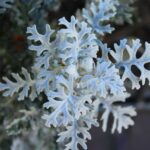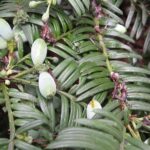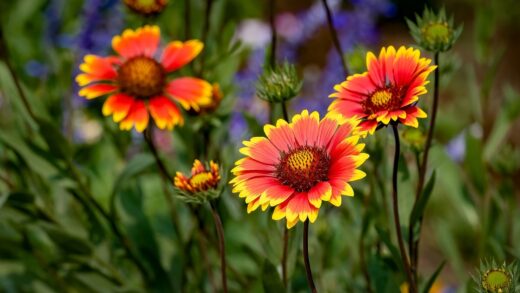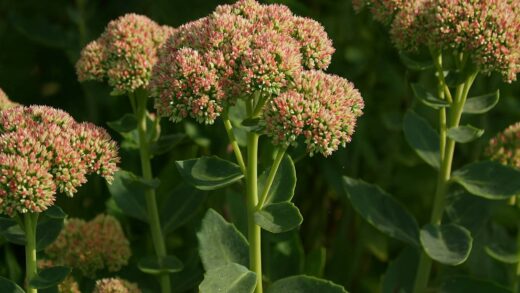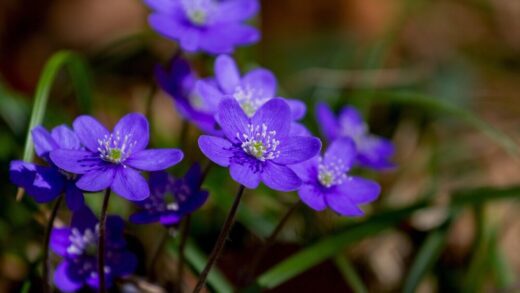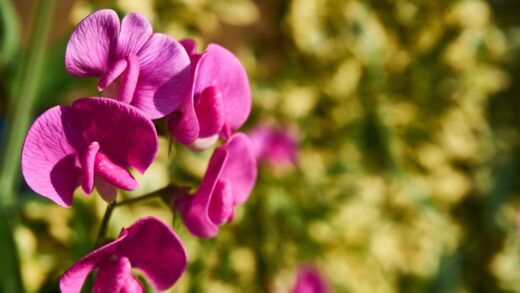Providing the Taiwanese toad lily with the appropriate nutrients is a cornerstone of its cultivation, directly influencing the lushness of its foliage, the strength of its stems, and the abundance of its unique, speckled autumn blooms. As a woodland native, this plant is adapted to thrive in soil that is naturally rich in decomposed organic matter. Therefore, our approach to fertilization should aim to replicate this humus-rich environment rather than relying on aggressive chemical feeding. Understanding the plant’s specific nutrient needs and the best methods for delivering them ensures a healthy, resilient plant that will grace the late-season garden with its exotic charm for many years. A well-nourished toad lily is not only more beautiful but also better equipped to withstand pests, diseases, and environmental stress.
The primary nutritional need of the Taiwanese toad lily is a steady supply of organic matter. This is far more important than a regimen of synthetic fertilizers. The plant flourishes in a soil environment that is teeming with microbial life, which breaks down organic materials like compost and leaf mold into a form that the plant’s roots can easily absorb. This slow and steady release of nutrients perfectly matches the toad lily’s feeding habits. Before planting, it is essential to amend the soil with a generous amount of well-rotted compost, creating a reservoir of nutrients that will support the plant as it establishes itself. This initial soil preparation is the most critical fertilization step you can take.
Throughout the life of the plant, the best way to meet its nutrient requirements is to continue to replenish this organic matter annually. Each spring, as new growth begins to emerge, applying a one to two-inch layer of compost or well-decomposed leaf mold as a top dressing around the base of the plant serves as a slow-release fertilizer for the entire season. As this layer breaks down, it continuously feeds the soil and, in turn, the plant. This method also improves soil structure, enhances moisture retention, and supports the beneficial microorganisms that are vital for a healthy soil ecosystem.
While the Taiwanese toad lily is not a particularly heavy feeder, a supplemental application of a balanced, slow-release granular fertilizer can be beneficial, especially if your soil is not naturally rich. If you choose to use a granular fertilizer, apply it in the spring according to the package directions. A balanced formula, such as a 10-10-10, provides equal amounts of nitrogen (N) for leafy growth, phosphorus (P) for root and flower development, and potassium (K) for overall plant health and vigor. Sprinkle the granules around the base of the plant, avoiding direct contact with the emerging shoots, and gently scratch them into the soil surface before watering thoroughly.
It is crucial to avoid over-fertilizing, particularly with high-nitrogen fertilizers. Excessive nitrogen can stimulate rapid, weak, and overly lush foliage at the expense of flower production. This soft growth is also more attractive to pests like aphids and more susceptible to disease. The goal is to encourage steady, strong growth, not a sudden, unsustainable burst. In most cases, a simple annual top dressing of compost is perfectly sufficient to meet all the plant’s nutritional needs, making supplemental chemical fertilizers unnecessary for a healthy, established plant in good soil.
More articles on this topic
The role of organic matter
Organic matter is the single most important component of a successful fertilization strategy for the Taiwanese toad lily. Materials like compost, leaf mold, and well-rotted manure are not just sources of nutrients; they are soil conditioners that fundamentally improve the growing environment. When you incorporate organic matter into the soil, you are feeding the complex web of life within it, including bacteria, fungi, and earthworms. These organisms are essential for breaking down nutrients and making them bioavailable to the plant’s roots, a process that synthetic fertilizers bypass.
The structure of the soil is dramatically improved by the presence of organic matter. In heavy clay soils, organic particles wedge themselves between the fine clay particles, creating larger pores that improve drainage and aeration. This is vital for preventing the anaerobic conditions that lead to root rot. In sandy soils, which drain too quickly, organic matter acts like a sponge, absorbing and holding onto water and nutrients that would otherwise be leached away. This creates the consistently moist yet well-draining environment in which toad lilies thrive.
Compost is arguably the best all-around soil amendment and organic fertilizer. It is a balanced source of a wide range of macro- and micronutrients that are released slowly over time, preventing the risk of fertilizer burn associated with chemical feeds. A top dressing of compost in the spring provides all the nutrition a toad lily needs for the season. Furthermore, it introduces beneficial microorganisms into the soil, which can help to suppress plant diseases and improve overall soil health. Making your own compost is a sustainable way to recycle garden and kitchen waste into a valuable resource for your plants.
Leaf mold, which is simply decomposed leaves, is another excellent organic amendment that closely mimics the natural forest floor where toad lilies grow. It is particularly good at improving soil structure and has exceptional water-retention properties. While it is generally lower in nutrients than compost, it is a superior soil conditioner. You can create your own leaf mold by simply piling up fallen leaves in the autumn and allowing them to break down over a year or two. Using leaf mold as a mulch and top dressing is an excellent way to create the ideal, humus-rich soil for your toad lilies.
More articles on this topic
Understanding fertilizer numbers
When you purchase a commercial fertilizer, you will see three numbers prominently displayed on the package, such as 10-10-10 or 5-10-5. This is the N-P-K ratio, which represents the percentage by weight of the three primary macronutrients: Nitrogen (N), Phosphorus (P), and Potassium (K). Each of these nutrients plays a distinct and vital role in plant growth. Understanding what these numbers mean can help you choose the right product if you decide that supplemental fertilization is necessary for your Taiwanese toad lilies.
Nitrogen (N), the first number in the ratio, is primarily responsible for vegetative growth. It is a key component of chlorophyll, the pigment that allows plants to photosynthesize, and is essential for producing lush, green leaves and strong stems. A plant deficient in nitrogen will often have pale, yellowish leaves and may exhibit stunted growth. However, as previously mentioned, too much nitrogen can lead to weak, floppy growth and can inhibit flowering, which is why a balanced approach is crucial for flowering perennials like the toad lily.
Phosphorus (P), the second number, is vital for energy transfer, root development, and the production of flowers, fruits, and seeds. It helps the plant establish a strong root system, which is essential for water and nutrient uptake. For flowering plants, an adequate supply of phosphorus is particularly important in the period leading up to blooming. A phosphorus deficiency can result in delayed flowering, fewer or smaller blooms, and sometimes a purplish discoloration of the leaves. Fertilizers formulated for blooms, often called “bloom boosters,” typically have a higher middle number.
Potassium (K), the third number, is often referred to as the “quality” nutrient. It plays a crucial role in regulating many of the plant’s internal processes, including water movement, enzyme activation, and carbohydrate metabolism. Potassium contributes to the overall health, hardiness, and disease resistance of the plant. It strengthens cell walls, helps the plant withstand stress from drought or temperature extremes, and is important for the proper development of the rhizomes. A balanced supply of potassium ensures the plant is not just growing, but is strong and resilient.
Timing of fertilization
The timing of fertilizer application is just as important as the type of fertilizer used. The most effective time to provide nutrients to your Taiwanese toad lily is in the early spring, just as new growth is emerging. Applying fertilizer at this stage provides the plant with the resources it needs to fuel its initial growth spurt, develop strong stems, and produce a full canopy of healthy leaves. This early-season feeding will support the plant through its main vegetative growth phase during the spring and summer.
Whether you are using an organic top dressing like compost or a slow-release granular fertilizer, a single application in the spring is typically sufficient for the entire year. Slow-release formulas are designed to break down gradually over several months, providing a steady, consistent supply of nutrients that aligns with the plant’s needs. This “one and done” approach is simple, effective, and avoids the risks associated with over-fertilizing. It is best to avoid fertilizing late in the growing season.
Applying fertilizer in the late summer or autumn is generally not recommended. Fertilizing at this time, especially with a product high in nitrogen, can stimulate a flush of new, tender growth. This new growth will not have sufficient time to harden off before the first frosts arrive and will be highly susceptible to winter damage. This can weaken the overall plant and waste its energy reserves, which should be directed towards flowering and then storing resources in the rhizomes for winter survival. Let the plant naturally slow down as it prepares for dormancy.
The only exception to the “no late-season feeding” rule might be the application of certain organic materials. For instance, in the autumn, after cutting the plant back, you can apply a layer of shredded leaves or compost over the crown. This acts more as a winter mulch and a soil amendment than an active fertilizer. Over the winter, these materials will begin to break down slowly, and by the time spring arrives, their nutrients will start to become available to the plant’s roots right when it needs them most. This method enriches the soil and prepares it for the next growing season.
Signs of nutrient deficiency
Identifying the signs of nutrient deficiency can help you address problems before they severely impact the health of your Taiwanese toad lily. The most common sign of a nutrient issue is discoloration of the leaves. A general yellowing of the foliage, particularly on the older, lower leaves, is a classic symptom of nitrogen deficiency. This condition, known as chlorosis, occurs because nitrogen is a mobile nutrient, and the plant will move it from the old leaves to support new growth. If you observe this, a top dressing of compost or a dose of balanced fertilizer in the spring can help correct the issue.
While less common in toad lilies, a phosphorus deficiency can sometimes manifest as stunted growth and leaves that take on a dark, almost purplish tinge. This is because phosphorus is essential for energy transfer, and a lack of it can slow down all the plant’s growth processes. This symptom is more likely to occur in very acidic or very alkaline soils where phosphorus becomes chemically “locked up” and unavailable to plants. Ensuring your soil has a pH in the slightly acidic to neutral range (6.0 to 7.0) will help with phosphorus uptake.
A potassium deficiency can be harder to diagnose, as its symptoms can be more subtle. It often appears as a yellowing or browning along the margins or edges of the older leaves, while the center of the leaf remains green. The plant might also seem generally weak, with thin stems, and may be more susceptible to diseases or stress from heat or drought. Since potassium is crucial for overall plant hardiness, a deficiency can lead to a general decline in vigor. Again, a balanced organic fertilizer like compost is the best way to provide a wide spectrum of nutrients, including potassium.
It is important to remember that poor plant health is not always caused by a nutrient deficiency. Before you rush to fertilize, be sure to rule out other potential causes. Improper watering (both too much and too little), insufficient light, poor drainage, or soil compaction can all produce symptoms that mimic nutrient deficiencies. Always assess the overall growing conditions first. In a well-prepared garden bed with plenty of organic matter, nutrient deficiencies in Taiwanese toad lilies are relatively rare. The best approach is to focus on building healthy soil, which in turn will grow healthy plants.







